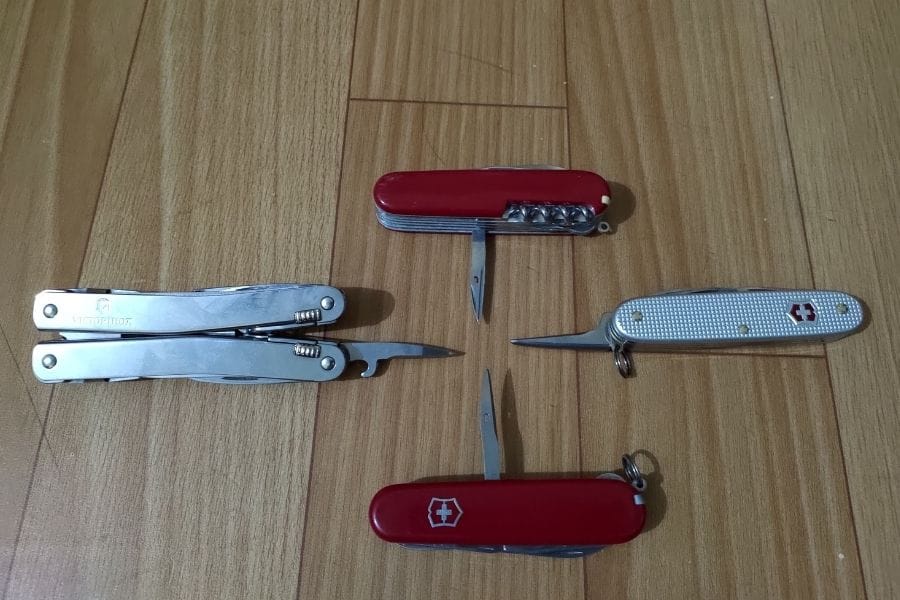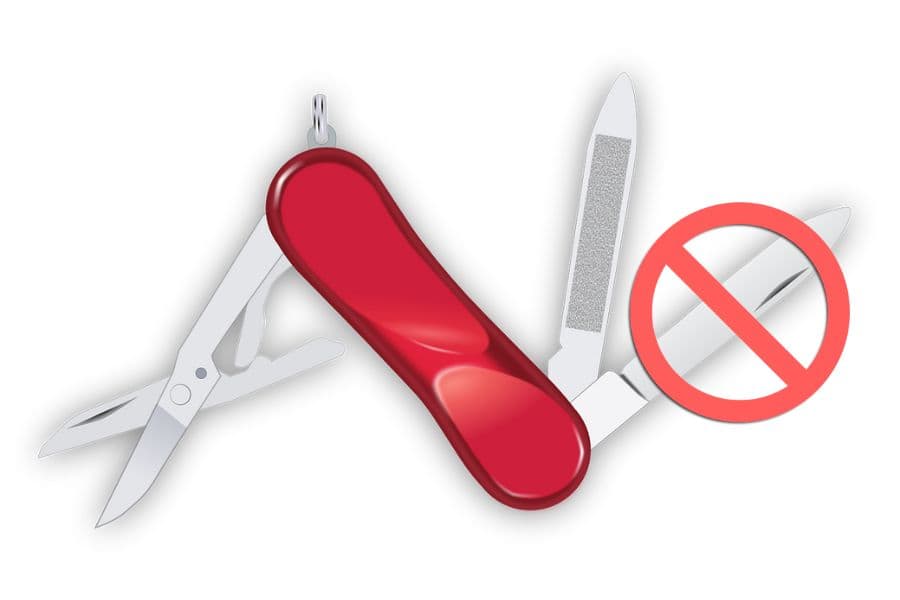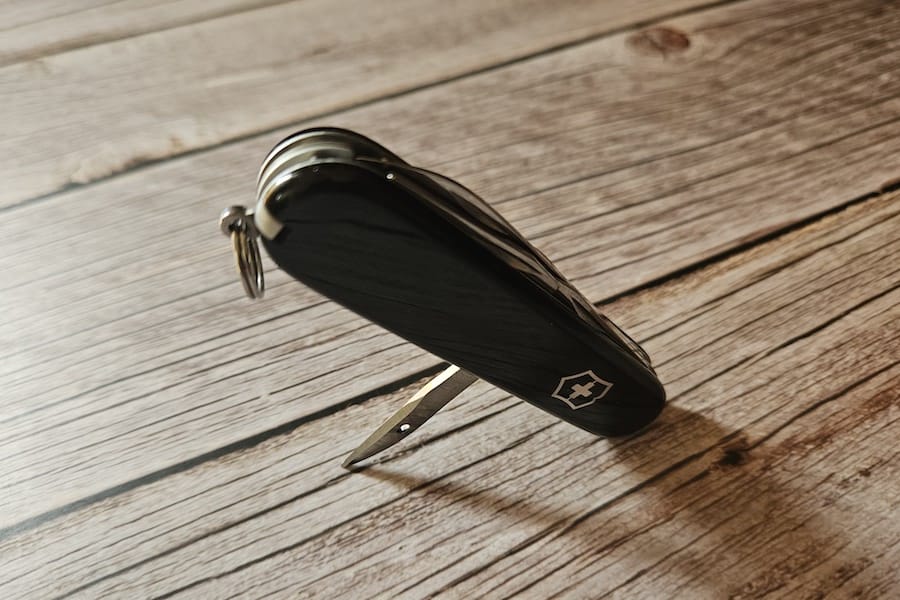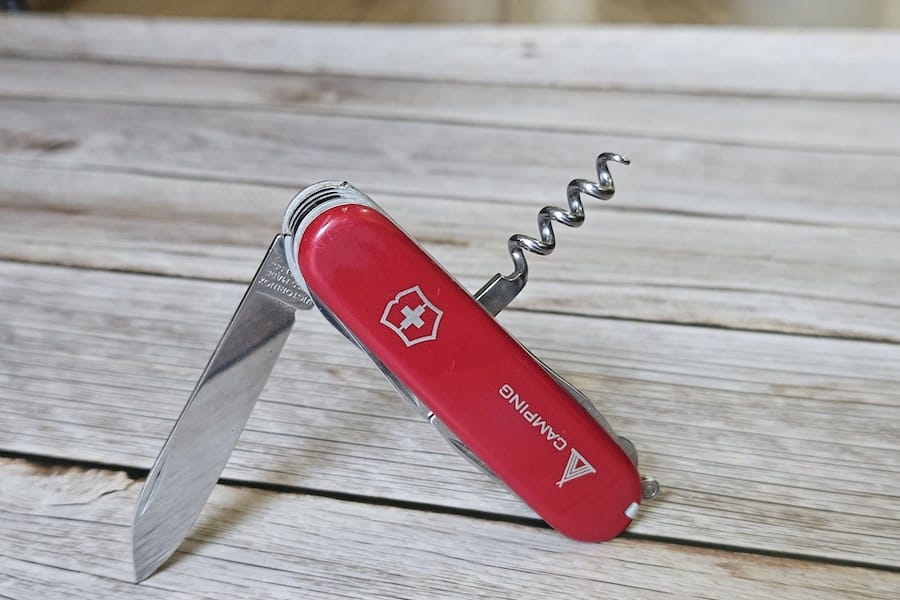If you have a Victorinox Swiss Army Knife (SAK), chances are it has an awl. When I first saw this tool, it appeared useless to me. If you also think similarly, you are grossly mistaken. Over time, I have found this tool so useful that I always make sure that the Swiss Army Knife I carry always has an awl. If you are not sure which tool I am talking about, the awl is called ‘reamer’ or ‘punch’ by Victorinox. Yes, it is the tool with the hole that you will find in many SAKs.
The awl or the reamer in a Swiss Army Knife is used for punching holes in materials like leather, canvas, plastic as well as softwood. The shape of the tool also allows you to make an already existing hole bigger and circular by pushing and rotating the reamer through the hole. Some versions of the tool have a sewing eye, which can be used to sew thick cloth or leather.
In fact, Victorinox uses different variations of the awl in its SAKs and Multi-tools. I have seen three different designs of the awl.
The one on the left is the design you will see in most of the SAKs that Victorinox produces.
It is on the backside of the SAK and opens halfway, horizontal to the body of the SAK.
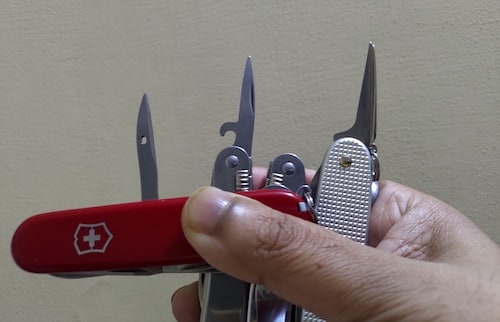
The one in the middle is found in the Victorinox Swisstool and Swisstool Spirit multi-tools. It is the only design that is lockable. Notice that it does not have a sewing eye.
The last one is found in only a select few SAKs. It is on the front side of the SAK and opens up vertically inline to the body of the SAK. I found this design to be the strongest and also most comfortable to work with. But this also does not have a sewing eye.
Using the tool as a Punch or Awl
This is the most common use of the tool. Wherever you need to make a hole, just drive the awl in with some force. It is strong enough for material like canvas, plastic, or even softwood. You can think of it as something like those large needles used for sewing sacks.
Speaking of needles and sewing, you can use the awl for stitching if it has a sewing eye in it. Though there are some designs that do not have a sewing eye (as shown above), the design with the sewing eye hole in the awl is the most common. Chances are, if you have one of those popular Swiss Army Knives, the awl in it does have a sewing eye.
If you already know how to sew with a sewing awl, the process is a no-brainer really. I bet you have seen cobblers mending shoes with their sewing awls. It is not something that can be explained in words and you should really watch someone do it. Here is an excellent video that clearly explains the process.
Interesting, isn’t it?
Just to know that you can fix your bags or shoes during an emergency if you have a SAK with an awl in it (and some threads) is so empowering. I did it once when one of my cheap backpacks was torn while traveling. I don’t use that backpack anymore, but at that time the stitching made the bag functional and usable enough and prevented any further tearing during the journey.
You may need some practice and the stitching may not look pretty, but it will get the job done in times of need. You can always do a better job later on or get it mended by a professional afterwards.
Can you use the awl in a survival situation to stitch a cut or a wound?
I doubt it. The awl is too broad and thick for stitching a wound. You will probably do more damage to yourself even by trying something like that.
Using the tool as a Reamer
As a reamer, you can make an already existing hole bigger and circular in shape. The sharpened edge of the awl makes it a very effective reamer.
You just drive the tool through the hole, then rotate it inwards keeping enough pressure.

This allows the sharp edge to carve out more materials thereby opening the hole wider and giving it a round shape.
This works great on materials like plastic. I have used it multiple times on my DIY projects at home. Here you can see me enlarging holes in a plastic bottle.
Why not use the SAK blade to make a hole?
You might be thinking that you can use the blade to make holes too. The blade can make holes alright, but it is not as effective as the reamer. The blade is much wider and not as strong at the tip. On the other hand, the awl is thick and narrower than the blade with a strong tip. It can withstand more force applied on it vertically than the blade.
Making small holes with the blade will be difficult, and putting much pressure on the tip may bend or even break it. I am sure you won’t take that chance on the SAK blade, especially when you have the awl which is designed for that exact task.
Making holes in a Belt
This is the only task that most people will use the awl for simply because everyone needs to punch a hole or two in their belt sometime or the other. In fact, initially, I used the awl only for this purpose.
It needs both the punching and reaming action to get the job done. First, you punch through the leather where you need the hole in your belt.
Then you ream on it by twisting the awl with pressure to evenly carve out a circular hole, just big enough for the belt buckle tongue.
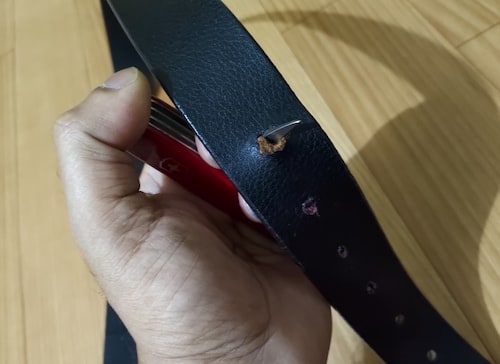
Note that the hole will not be good looking like the ones you can make with a belt hole puncher tool. But it will get the job done, and work as good. I have done it multiple times on many of my belts. It works like a charm.
Making starter holes for Screws
This is perhaps one of the most useful uses of the awl and can come handy more often than you think. If you want to drive a screw into wood, you need to have a small opening hole in the wood where you can plant the screw. You can probably use a hammer and a nail to create that starting hole. But what if you do not have the whole toolbox with you? The SAK awl can get it done.
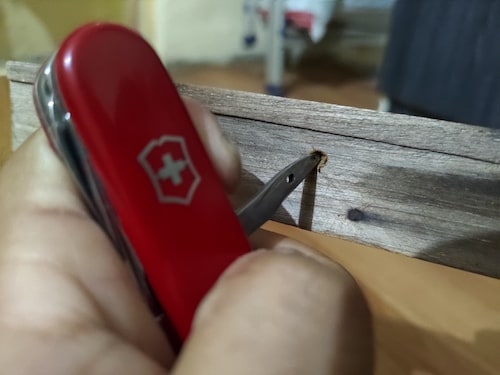

It is similar to how you punch and ream through thick plastic, you just have to use the same technique on the wood. It will take more time than reaming through plastic, but with some effort, you will be able to create a precise hole where you can put the screw in. Then just screw it down the hole with the flat-head or Philips-head screwdriver in your SAK.
Using as a fingernail cleaner
This is something I never thought of before until I saw someone do it. Yes, you can use the awl to clean your fingernails sometimes. You might know that some SAKs do have a fingernail cleaner. It is called a nail file, with a tip that can be used to clean your fingernails.
I have seen the nail file in only a few models, especially in the small pocket-sized SAKs. But the awl is pretty much present in all medium size and large size SAKs.
The pointed end of the awl is just the right size to get underneath your fingernail to clean it.
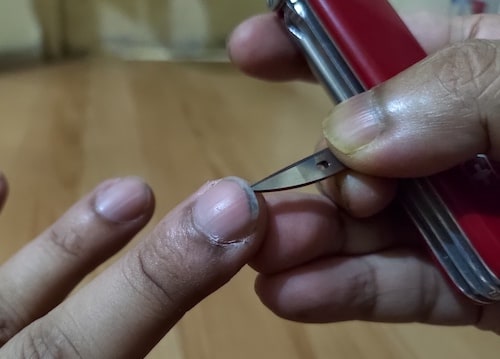
However, remember that the awl has a sharp edge and if you are not careful, you can injure your finger while cleaning it. But in the absence of anything else to clean your fingernails, the awl is just the best-suited tool for the job.
Using as an Ice Pick
You can use your knife for breaking or chipping ice, or you can use the awl.
An ice pick needs to be strong as you will be putting in some force to break the ice. The awl in the SAK is strong enough to withstand that pressure.
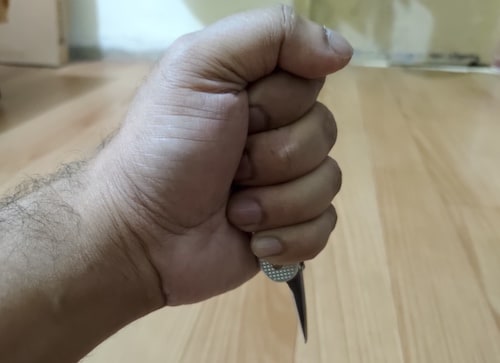
However, from experience, I can say that the awl placed on the front side of the SAK is more suited for this task.
If the awl is on the backside which opens half-way horizontally on the side of the SAK, you just cannot hold it with a firm grip to pick at the ice. However, if the awl is at the front which opens vertically in line with the length of the SAK, you can grip it just like a proper ice pick, and pick at or chip at the ice.
Using as a Self-Defence Weapon
This is something which I have heard a lot, but haven’t seen anyone using it as such. It appears that you can use the awl as a weapon to defend yourself.
I don’t know how effective it will be, especially when you have a knife in the SAK which is bigger and longer, and probably can do more damage. But considering both the knife and the awl is non-lockable in most SAKs, I assume none will make a good weapon.
But if you are desperate enough, you can probably use the awl as a hidden weapon in your fist. You do it by closing your fist around the SAK and keeping the awl protruding between your index and middle fingers.
This can be quite effective as a concealed weapon in your fist, as your opponent might not notice it.
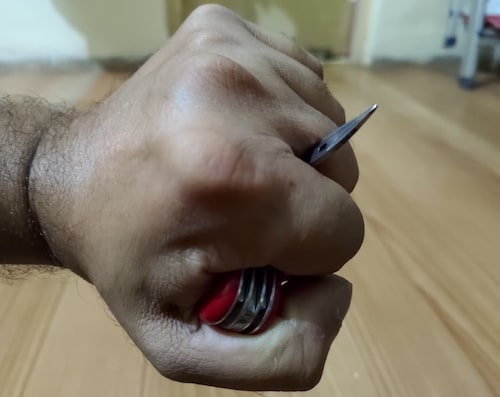
If you punch someone with this, it can do some serious damage.
But there is a probability of you getting injured with it too. One edge of the awl is sharp and the awl is not lockable. It can close on your finger and cut it with the sharp edge of the awl.
As a Scratch Awl for scribing
The awl is strong enough to be used as a scratching tool, to scribe on wood, leather or steel. This is again something which you can do with a knife, but the awl is better suited for it. Especially if you are scribing on hard materials like wood or steel, you can save your knife from getting dull or damaged, and use the awl instead.
The awl is also more precise for making scribe marks than a knife. It is thick and pointed which allows it to be used as a pen to scribe on something. This is especially useful in woodworking.
Final Thoughts
I am sure you can think of a lot of other uses of the awl in your Victorinox Swiss Army Knife. Breaking glass in the car window, reaching into tight places, opening a new tube of adhesive, etc. might be some of those. You get the idea, right?
I read somewhere that the awl was also referred to as ‘hoof pick’ because people thought it was meant for picking items out of horses’ hooves.
The awl in the SAK earlier did not use to have a sharp edge, so it was only good for punching a hole. The sharpened edge and the sewing eye that Victorinox added later have made the awl so much more functional. I am sure you will start admiring this useful tool in the SAK as you use it more and discover more uses of it.

